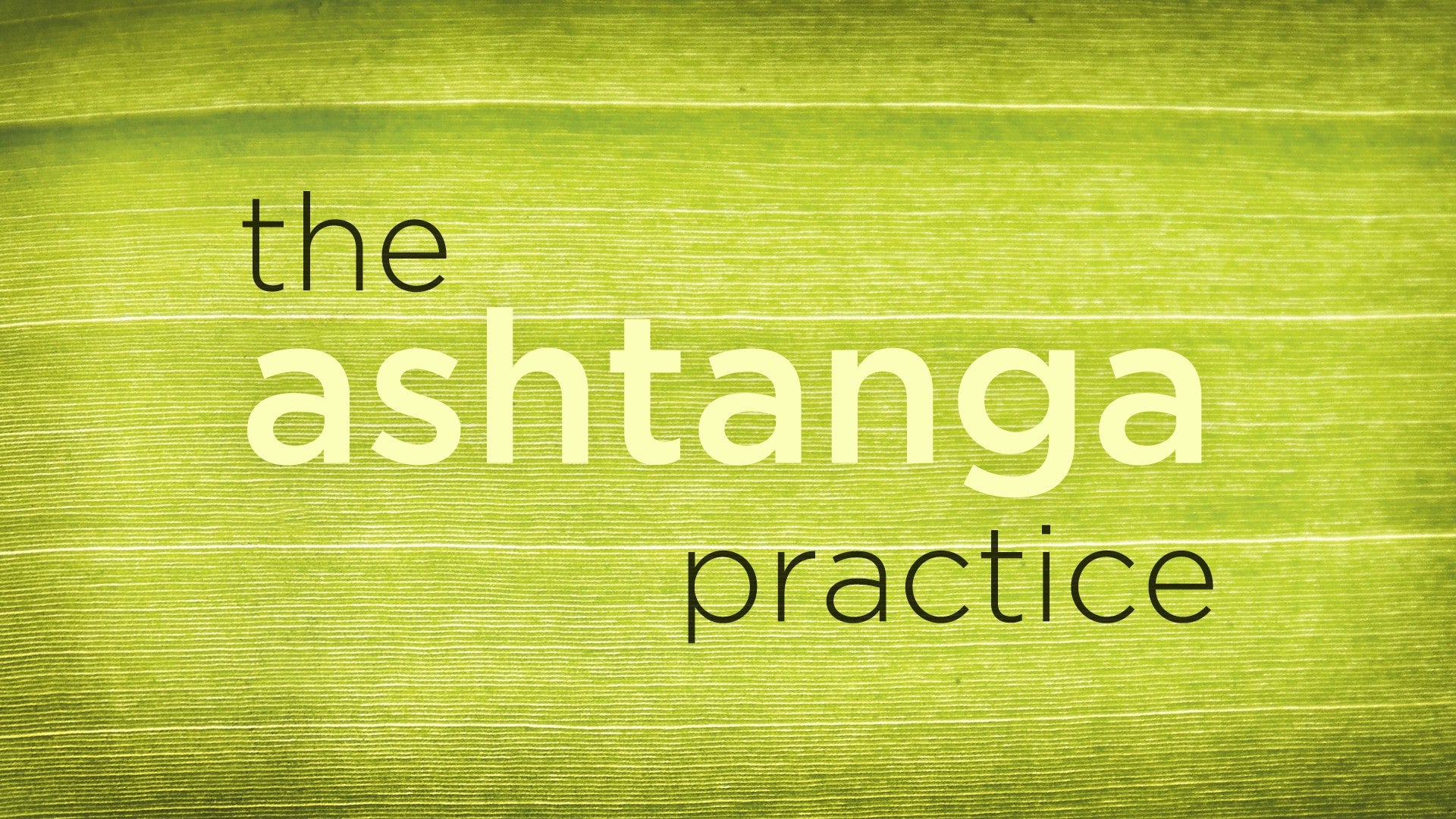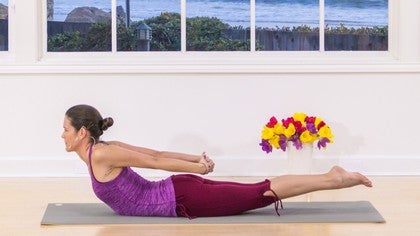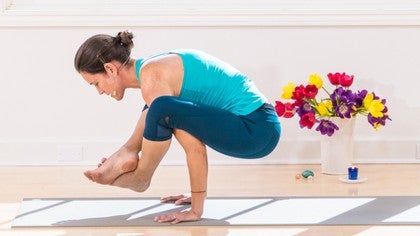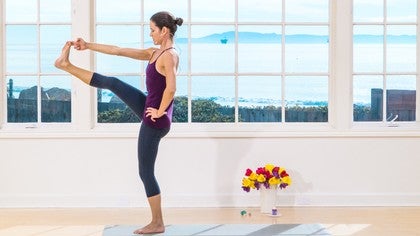Description
About This Video
Transcript
Read Full Transcript
Hi, welcome back. So, quite obviously there are many many poses in the primary series that are very challenging, and rather than feeling like you can't do them at all, I wanted to give you some preparatory poses or some modifications with props, straps, blocks, blankets, to support the pose so that over time, you can get deeper and deeper into it, and then ultimately do the full expression of the pose. The first three that I want to break down today are bhujapidasana, kurmasana, and supta-kurmasana, and then garbha pindasana, all right. So, let's start in downward-facing dog. Just give yourself a few breaths here, you would want to be warmed up before moving into these poses, but this is a nice little tutorial to prepare you when you are ready.
Let the head relax, soft through the neck, and just enjoy a few breaths here. All right, and then steady the body in downward-facing dog, traditionally, to enter this pose, you would look forward a little and at the bottom of the exhale, you would hop the feet around the hands. So I'll demonstrate that, but please feel free to enter it a different way. First option, spring forward, okay? But if for any reason that freaks you out or doesn't feel comfortable in your body, you can simply walk the feet forward to the front of the mat, take a fairly wide stance, and enter the pose from here.
Okay, so then, working into it slowly, you want to drop the hips, take the hands behind the ankles, and begin to crawl the shoulders behind the knees. Okay, so for some of us, this is more than enough. And you can simply stay here, breathing into any areas of contraction or resistance, the backs of the legs, the muscles of the back. Maybe slowly, gradually, work on lengthening the legs a little to deepen that stretch, soft through the neck. And if that's your posture, that's beautiful, stay there for five breaths, and move to the next.
If you feel you can take it a step further, plant the hands behind the feet, and drop the hips. Then you can try just taking the weight back onto the hands. Fall forward and take it back, fall forward, and play with this for about five breaths. Just working with the transfer of weight, the shift in the balance. If you feel you can move on, you draw the feet together, and cross the ankles, really using the bandhas here to draw the energy in and up, strong through that upper body, steady gaze.
When you feel comfortable there, you would move into the full pose by drawing in and up through the core, drawing the feet through, and taking the head down. All right, remember, if this is your max, that's fine, stay here for a few weeks, a few months, a few years, eventually, it will change. All right. From here, moving into kurmasana. We enter the same way, come back into downward-facing dog.
Find that deep, full breath. Your choice, you can hop the feet around the hands, or, if that doesn't feel appropriate, simply walk the feet forward to the front of the mat. Again, take that wide stance. And to begin with this pose, just ease the sit bones down, keep your knees bent, and begin to draw down, arms under the legs, okay? Again, for some of us, this is more than enough.
You can work on simply staying here, breathing into the resistance. And if you feel you can deepen it, begin to slide the feet out, walk the hands out, and draw the chest a little closer to the earth. Whatever your edge is, stay there. Give it five steady breaths. If it organically opens while you're there, then go ahead and take it a little deeper.
Never any need to force or push, or go beyond your edge. Simply meet the pose with your breath, and let it change over time. For supta-kurmasana, draw the feet in, and just ease yourself down as far as feels manageable. And you can simply keep holding the ankles, or you can extend the arms out and melt from here. And don't even worry about coming into the full bind reaching the arms back, just take what you can and give it your breath.
And to come out of that, just gently unwind. And we'll move right into garbha pindasana from here. So, for many of us, the challenge here is not being able to come into full lotus, totally okay. If this is not available in your body on any given day, just draw the legs into a simple cross-legged position. Just whatever you can, maybe half-lotus, whatever is available.
And then from here, if getting the arms through the legs is prohibitive, then simply draw the legs in towards the chest, and hug the arms around the legs, rather than going through. You can even use the hand to kind of hug that foot in. And you can definitely take the roll from here, just easing down, and rolling around, and if it takes more than nine cycles, don't worry about it. Just do what you can. When you do come up, it's a lot harder to lift the entire body off the earth when you're not in full lotus, so just do what you can.
Pick it up for a breath or two, and come down. Over time, you'll gain more strength, gain more flexibility, be able to take it all the way up and into the full pose. But no rush, no pressure, just do what you can. All right, I hope that helped. I think the most important thing to keep in mind when you're working with really challenging poses is to absolutely do what you can, rather than feeling completely frustrated and skipping it all together, just meet the pose at your own edge, do as much as you can, really give it your awareness and your breath, and then move on to the next.
I hope that helps, namaste.






You need to be a subscriber to post a comment.
Please Log In or Create an Account to start your free trial.